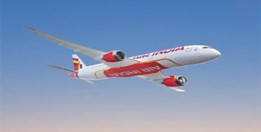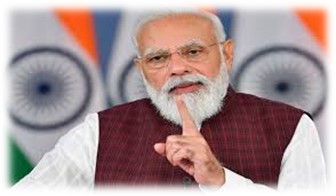On Tuesday, Air India declared the successful integration of full-service airline Vistara into its operations. The recently formed Air India entity is now prepared to conduct over 5,600 flights each week to more than 90 locations, highlighting a pivotal moment in the Indian aviation sector.

The merged airline will now operate 103 domestic and 71 international routes.
Through this merger, Singapore Airlines obtains a 25.1 percent share in the enlarged Air India. This achievement comes after the merger of Air India’s budget airlines, Air India Express and AIX Connect (previously known as Air Asia India), on October 1, 2024.
Campbell Wilson, Managing Director & Chief Executive Officer, Air India, said, “The merger of Air India and Vistara completes the consolidation and restructuring phase of the Air India Group’s post-privatisation transformation journey, and is thus a significant milestone. Over the past two years, teams across the four airlines have worked closely together and with other stakeholders to ensure that the transition of people, assets, operations and, most importantly, customers, was as seamless as possible.
Given the scale and scope of this project and its unprecedented nature, I would like to acknowledge the support received from the Directorate General of Civil Aviation (DGCA), Ministry of Civil Aviation (MoCA), Bureau of Civil Aviation Security (BCAS) and others in making this merger possible. I would also like to acknowledge and thank our staff, who have undertaken this task whilst also driving comprehensive transformation across the business and supporting the induction of over 100 additional aircraft to the operating fleet.
Finally, I would like to extend our sincere appreciation for the support and encouragement of our customers, for whom all the effort is ultimately intended, and to re-emphasise our commitment to creating a world-class global airline with an Indian heart.”
The merger signifies the conclusion of Vistara, a partnership between Tata Group and Singapore Airlines, which has been a significant participant in India’s aviation industry for almost ten years.
Vistara’s last flight took off from Delhi to Singapore, signifying the conclusion of its standalone operations.
The inaugural international flight of the newly established entity, labelled ‘AI2286,’ travelled from Doha to Mumbai, whereas the first domestic flight, ‘AI2984,’ linked Mumbai with Delhi.
To enhance efficiency, the code ‘AI2XXX’ is utilized for previous Vistara flights currently under Air India, assisting passengers in finding these options while booking.
The merger between Air India and Vistara was initially revealed in November 2022, after Tata Group acquired Air India from the government in January 2022. Tata’s efforts to consolidate are transforming the aviation industry, with Air India, Vistara, and AIX Connect securing a 29 percent share of the domestic market as of September.
History of AIR INDIA
The beginnings of Air India date back to Tata Air Services, established by entrepreneur JRD Tata in 1932. JRD Tata had a keen interest in aviation and was one of the earliest individuals in India to obtain a pilot’s license.
Tata Air Services initially focused on mail transport but soon expanded, venturing into passenger services and launching new routes. A report by The New York Times indicated that Tata Air Services operated efficiently and profitably.
In 1938, the airline was rebranded as Tata Airlines and for the first time expanded its international reach by including service to Colombo, Sri Lanka, in its route network. By this stage, profits had increased tenfold, underscoring the airline’s continued success.
By 1942, JRD Tata was already considering the airline’s post-war future, even though all of Tata Airlines’ aircraft had been commandeered for military use during World War II. Following India’s independence, the government renamed the airline Air India and acquired a 49% share in it. In 1948, the airline flew from Mumbai to London Heathrow for the first time.
This was a long-awaited moment for JRD Tata, who had recruited a former TWA flight attendant to demonstrate first-rate customer care on board in advance of the flights. However, Air India was taken out of Tata’s control when the government nationalized it five years later, along with a number of other carriers.
But shortly after, he became the airline’s chairman and said later in his biography “I came to the conclusion that I should not shirk the opportunity of discharging a duty to the country and to Indian aviation. I am particularly anxious that the present high standards of Air India International should not be adversely affected by nationalization.”.
Globalization
Air India kept up its modernization efforts and concentrated on acquiring the newest aircraft in spite of being nationalized. The airline received its first Boeing 707 in 1960 and its first Boeing 747 ten years later. The carrier kept growing its route network in addition to its constantly growing fleet. This includes places like Rome, Paris, and Düsseldorf in Europe, as well as places like Hong Kong, Tokyo, Singapore, and Bangkok in the east.
In 1977, JRD Tata was ousted as Chairman of Air India, transferring the airline’s control decisively to the government. At that time, the airline was informally referred to as “The Maharaja” (The King) due to its service and connectivity. These transformations were initiated by JRD Tata and positioned the airline as a role model for several of today’s outstanding carriers, including Singapore Airlines and Cathay Pacific.
During the 1980s and 1990s, Air India continued to thrive globally, expanding its network by incorporating additional cities and keeping a contemporary fleet. By the 1990s, the Airbus A310 and Boeing 747-400 had established themselves as reliable options, effectively and comfortably operating medium and long-haul flights. Nevertheless, the following decade witnessed Air India encountering challenges for what could be considered the first time in its existence.
The initial indication of difficulty
Even with its achievements over the last few decades, by the year 2000, the government sought to privatize Air India. Nonetheless, efforts to achieve this were unsuccessful, and as India opened up its aviation sector, Air India started encountering growing competition from fresh, vibrant airlines like the budget airline IndiGo.
Although Air India stayed in the black, its domestic division, Indian Airlines, faced difficulties and experienced losses by the early 2000s. To address the issue, the government decided to merge the two carriers in 2007, establishing a single brand for comprehensive operations. Nevertheless, the recently combined Air India swiftly started accumulating deficits and has continued to do so for the majority of years that followed. In 2014, Air India joined Star Alliance as its 27th member, aligning with airlines such as Lufthansa, Air Canada, and Singapore Airlines.
Air India at present
Fast-forward to now, and even with accumulating billions of dollars in debt, Air India seems to be making progress. This occurred after financial struggles compelled the government to sell the airline. In January 2022, following a bidding procedure that included the Tata Group and SpiceJet, Air India was formally transferred to the Tata Group. Soon after, Campbell Wilson, previously the CEO of Scoot, took on the role of the airline’s new CEO.
Since that time, the Tata Group revealed that Air India would be combined with one of the group’s other carriers, Vistara, by 2024. Earlier this year, Air India placed one of the largest aircraft orders ever, consisting of 470 planes – 210 from the Airbus A32neo family, 40 A350s, 190 Boeing 737 MAXs, 20 787-9s, and ten 777-9s.







1 thought on “Tata Group’s Strategic Move: The Air India-Vistara Merger 2024”